There are no fish in UK waters to really confuse the ling with due to its long, slender profiled, body. The first dorsal is short and rounded, with the second dorsal long reaching from the rear of the first dorsal almost to the tail root. The pelvic fin does not reach as far back as the pectoral fin. The jaws are virtually equal in length and full of needle sharp teeth.
In deep water ling take on a dull brown on the back with silvery white sides, but in shallow water and when living around reefs the brown can be a lighter shade. The fins can also be edged with white and even be freckled.
The breeding season is between March and July, with an adult female capable of laying up to 60 million eggs. These float on the surface while they develop ensuring an even distribution due to tidal current movement.
Their diet is mainly of live fish such as pouting, whiting, codling, poor cod, small pollack and coalfish, also flatfish and even their own kind. They will sometimes lift in the water column to intercept mackerel and herring shoals, but lack the turn of speed to run a healthy mackerel down. They can also take crustaceans, such as deep water crabs.
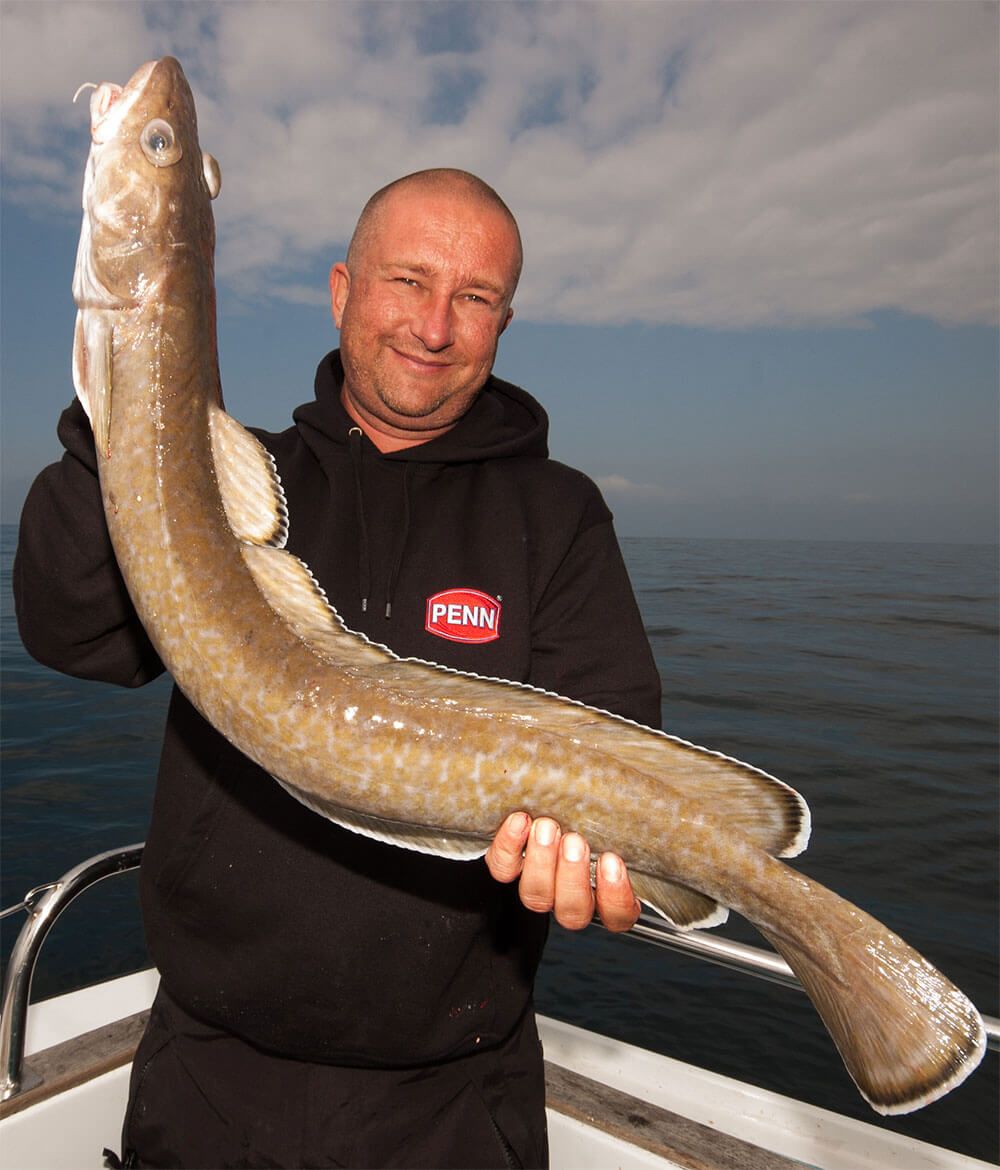
WHEN AND WHERE TO FISH
Ling are resident off the Norwegian coast as far as the Russian border, also around the southern, west and northwest coasts of Iceland, and down in to the Bay of Biscay. They are found all around the UK and Ireland, but are less common in the southern North Sea and off the Kent and Essex coast.
They are generally a deep water fish found in depths down to 1300-feet or more, but can be found in just 50-feet when living over reefs, and are commonly caught in depths of 100 to 400-feet when living around wrecks.
The season for ling is all year round, but the bigger fish show in the winter period, especially post-Christmas through to April.
Generally speaking, smaller ling up to 12lbs or so are often found over inshore and offshore reefs, also over rough ground, especially where there are rising rock pinnacles and areas where rock shelves and ridges break up the general terrain. They use the ground cover, and their slim, muscular body to weave in and out of structure flushing out smaller prey fish. As they reach double figures they mostly move off to deeper water, though a few fish over 20lbs will stay on the reefs with access to deeper water, especially in the autumn period.
The adult fish that move out in to deeper water have a voracious appetite, so will always congregate where large numbers of prey fish live. This is typically around wrecks where the wreck feature offers hidey holes and tidal protection for the smaller fish. Again ling will hunt right in amongst the metal, but over low water will also venture further away to investigate smaller sections of wreck and wreckage that lay scattered around.
When both reef and wreck fishing, the choice of tide is governed by how fast the tide run is. Usually, and especially over deep water wrecks, the smaller neap tides will be best as these allow a slower drift over the fish holding structure. Over low water the ling hunt over a wider area, but as the tide run increases they move to take up station around the base of rock pinnacles and also the downtide side of a wreck where the tide flow is deflected and lighter.
This information tells us that our baits and lures need to be worked at seabed level or just above. Ling rarely lift more than 20-feet up from the seabed, and then only if bait fish shoals are in that level of the water column.
When a big ling is hooked, you need to bully the fish away from the seabed structure as fast as possible. A big ling will put their head down and feel solid at first on the rod tip before thumping it down. Keep heavy pressure on to lift the fish, then keep them coming.
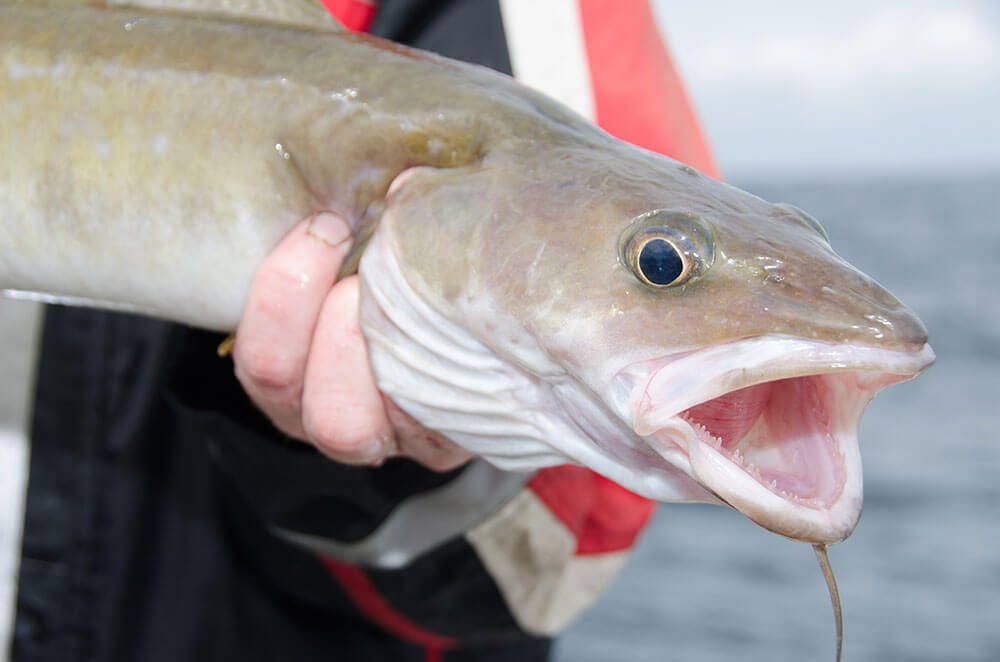
TACKLE FOR BOAT LING
Although in some areas of deep water 30lb class tackle is standard for ling fishing, nowadays a 20lb class rod is often the preferred weapon. Match this to a reel holding 350-yards or more of 30lb braid such as the Penn Fathom 20 or 25 and similar reels from Daiwa, Shimano and others. Add a short leader 3-feet longer than the length of the rod of 50lb clear mono to give a little stretch to protect light hook lengths, and also to protect the braid from wreck abrasion.
A growing band of anglers now choose to fish lures on light tackle even for big ling and take a lot of heavy fish. A good choice is a 12/20lb rod about 8’6” in length and a small but powerful reel, such as the ABU Revo Toro 60 loaded with 20lb braid. Again add a short clear mono leader of 30lbs to combat abrasion and add a little stretch when playing a fish on a short line.
HOW TO BUILD A BOAT LING RIG
BEST BAITS AND LURES
The top ling baits are fillets of mackerel, or mackerel with the fillets left attached to the head, but the backbone and tail cut out to give free moving fillets. Herring, whiting and pouting fillets work well, as will whole squid.
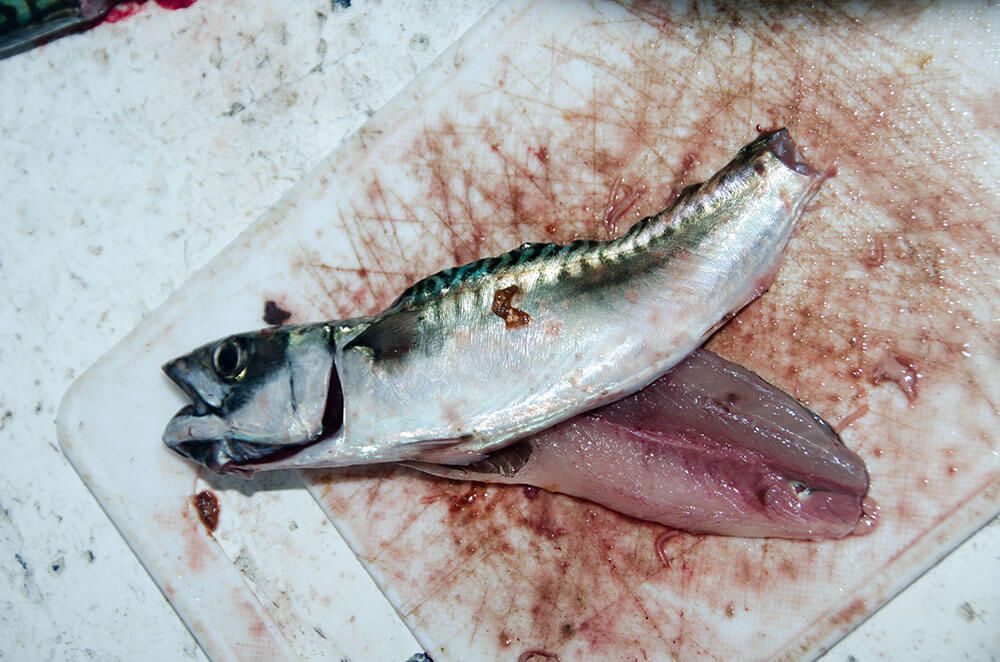
When it comes to lures, then look at the soft plastic shads. It is mostly the bigger shads over 5-inches that work best, and even shads up to 10-inches can work well when targeting really big ling. Good ones to look at are the Berkley Ripple Shads and Grubs, and anything similar. Mount these on lead heads armed with good quality hooks such as Owners.
Ready weighted shads are sandeel type lures also work exceptionally well. Calcutta shads and the Sidewinders are popular, and again anything similar is likely to work well!
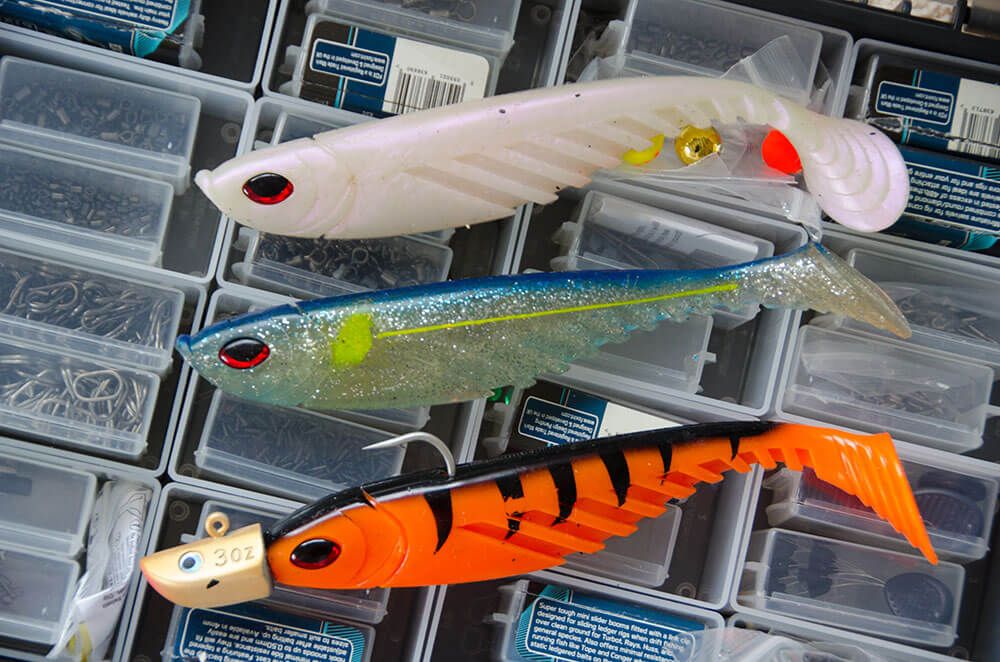
TOP TIP 1
Always fish a weight heavy enough to keep the line as vertical as you can. Fishing this way increases bite detection but also lessens the chance of the tackle snagging in the wreck.
TOP TIP 2
A good tip when fishing whole flapper mackerel is to add a pink or luminous muppet above the bait, then slide this down over the nose and body to add visual impact and movement. This is especially effective when fishing in very deep and coloured water.
TOP TIP 3
When choosing shads, good colours are all black, red, white and clear blue, or mixes of these colours. Use a dark lure in clearer water even at depth, but change to a brighter solid colour if there is a little colour in the water.
TOP TIP 4
Make sure your hooks are sharp and recheck constantly. Ling have tough, bony mouths and at depth blunt hooks can simply bounce out without catching.
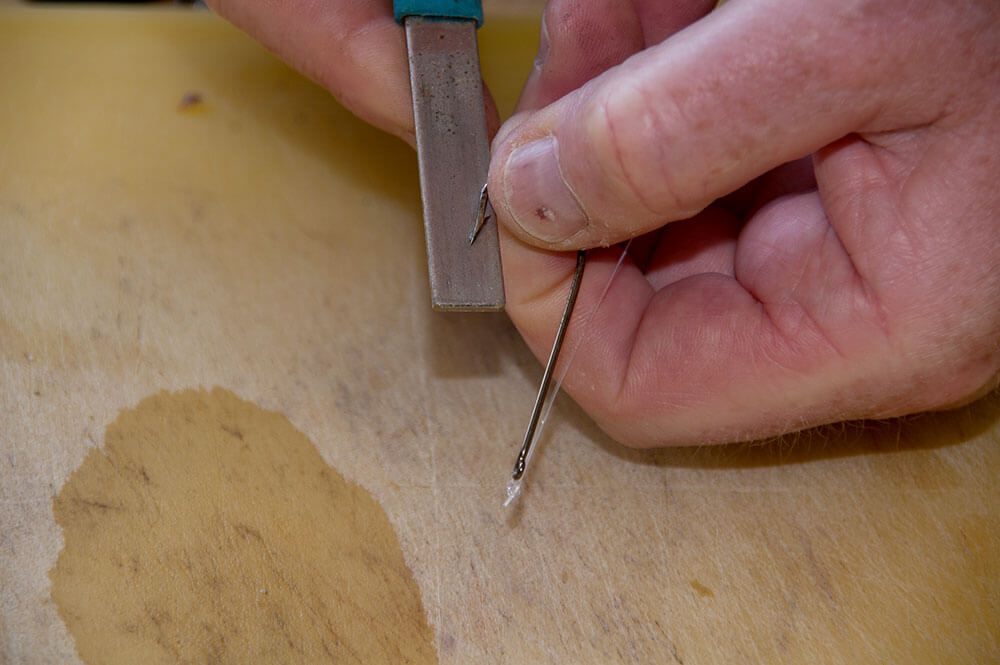
TOP TIP 5
When bait fishing, try adding a double Booby Bead with ball bearings in the cavities trapped between two stop knots. These spin to add vibration, but also ling love the metallic click the bearings make. This can often increase your overall catch rate.
In deep water ling take on a dull brown on the back with silvery white sides, but in shallow water and when living around reefs the brown can be a lighter shade. The fins can also be edged with white and even be freckled.
The breeding season is between March and July, with an adult female capable of laying up to 60 million eggs. These float on the surface while they develop ensuring an even distribution due to tidal current movement.
Their diet is mainly of live fish such as pouting, whiting, codling, poor cod, small pollack and coalfish, also flatfish and even their own kind. They will sometimes lift in the water column to intercept mackerel and herring shoals, but lack the turn of speed to run a healthy mackerel down. They can also take crustaceans, such as deep water crabs.

WHEN AND WHERE TO FISH
Ling are resident off the Norwegian coast as far as the Russian border, also around the southern, west and northwest coasts of Iceland, and down in to the Bay of Biscay. They are found all around the UK and Ireland, but are less common in the southern North Sea and off the Kent and Essex coast.
They are generally a deep water fish found in depths down to 1300-feet or more, but can be found in just 50-feet when living over reefs, and are commonly caught in depths of 100 to 400-feet when living around wrecks.
The season for ling is all year round, but the bigger fish show in the winter period, especially post-Christmas through to April.
Generally speaking, smaller ling up to 12lbs or so are often found over inshore and offshore reefs, also over rough ground, especially where there are rising rock pinnacles and areas where rock shelves and ridges break up the general terrain. They use the ground cover, and their slim, muscular body to weave in and out of structure flushing out smaller prey fish. As they reach double figures they mostly move off to deeper water, though a few fish over 20lbs will stay on the reefs with access to deeper water, especially in the autumn period.
The adult fish that move out in to deeper water have a voracious appetite, so will always congregate where large numbers of prey fish live. This is typically around wrecks where the wreck feature offers hidey holes and tidal protection for the smaller fish. Again ling will hunt right in amongst the metal, but over low water will also venture further away to investigate smaller sections of wreck and wreckage that lay scattered around.
When both reef and wreck fishing, the choice of tide is governed by how fast the tide run is. Usually, and especially over deep water wrecks, the smaller neap tides will be best as these allow a slower drift over the fish holding structure. Over low water the ling hunt over a wider area, but as the tide run increases they move to take up station around the base of rock pinnacles and also the downtide side of a wreck where the tide flow is deflected and lighter.
This information tells us that our baits and lures need to be worked at seabed level or just above. Ling rarely lift more than 20-feet up from the seabed, and then only if bait fish shoals are in that level of the water column.
When a big ling is hooked, you need to bully the fish away from the seabed structure as fast as possible. A big ling will put their head down and feel solid at first on the rod tip before thumping it down. Keep heavy pressure on to lift the fish, then keep them coming.

TACKLE FOR BOAT LING
Although in some areas of deep water 30lb class tackle is standard for ling fishing, nowadays a 20lb class rod is often the preferred weapon. Match this to a reel holding 350-yards or more of 30lb braid such as the Penn Fathom 20 or 25 and similar reels from Daiwa, Shimano and others. Add a short leader 3-feet longer than the length of the rod of 50lb clear mono to give a little stretch to protect light hook lengths, and also to protect the braid from wreck abrasion.
A growing band of anglers now choose to fish lures on light tackle even for big ling and take a lot of heavy fish. A good choice is a 12/20lb rod about 8’6” in length and a small but powerful reel, such as the ABU Revo Toro 60 loaded with 20lb braid. Again add a short clear mono leader of 30lbs to combat abrasion and add a little stretch when playing a fish on a short line.
HOW TO BUILD A BOAT LING RIG
BEST BAITS AND LURES
The top ling baits are fillets of mackerel, or mackerel with the fillets left attached to the head, but the backbone and tail cut out to give free moving fillets. Herring, whiting and pouting fillets work well, as will whole squid.

When it comes to lures, then look at the soft plastic shads. It is mostly the bigger shads over 5-inches that work best, and even shads up to 10-inches can work well when targeting really big ling. Good ones to look at are the Berkley Ripple Shads and Grubs, and anything similar. Mount these on lead heads armed with good quality hooks such as Owners.
Ready weighted shads are sandeel type lures also work exceptionally well. Calcutta shads and the Sidewinders are popular, and again anything similar is likely to work well!

TOP TIP 1
Always fish a weight heavy enough to keep the line as vertical as you can. Fishing this way increases bite detection but also lessens the chance of the tackle snagging in the wreck.
TOP TIP 2
A good tip when fishing whole flapper mackerel is to add a pink or luminous muppet above the bait, then slide this down over the nose and body to add visual impact and movement. This is especially effective when fishing in very deep and coloured water.
TOP TIP 3
When choosing shads, good colours are all black, red, white and clear blue, or mixes of these colours. Use a dark lure in clearer water even at depth, but change to a brighter solid colour if there is a little colour in the water.
TOP TIP 4
Make sure your hooks are sharp and recheck constantly. Ling have tough, bony mouths and at depth blunt hooks can simply bounce out without catching.

TOP TIP 5
When bait fishing, try adding a double Booby Bead with ball bearings in the cavities trapped between two stop knots. These spin to add vibration, but also ling love the metallic click the bearings make. This can often increase your overall catch rate.

